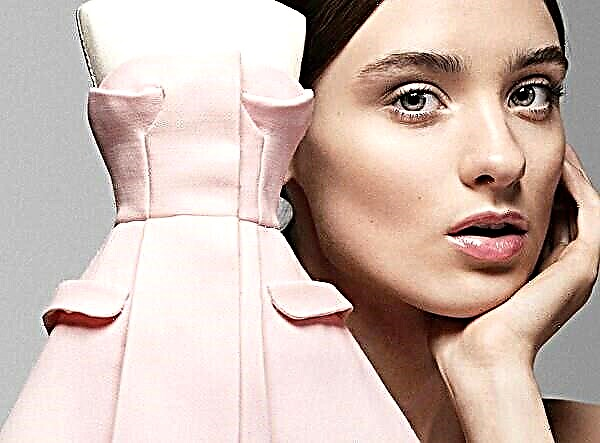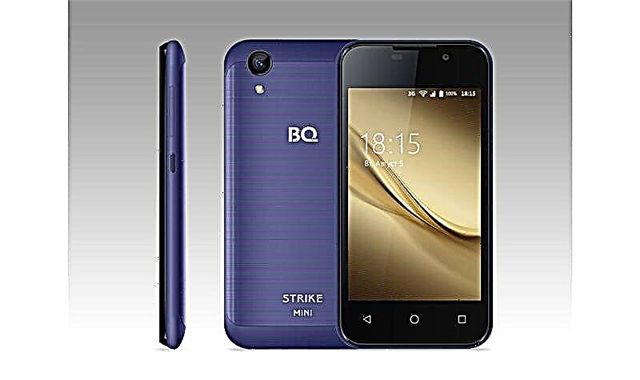Share
Pin
Tweet
Send
Share
Send
65 years ago, Enne Burda released her first fashion magazine with patterns for all women who wanted to look modern.
Few of us remember how women lived 65 years ago. We heard something about that life from mothers, grandmothers, familiar mothers and grandmothers. But do we imagine the general real picture of that way of life - which our mothers and grandmothers are well at least partially inclined to idealize ...
let's compare then and now.
First of all, many of our grandmothers and mothers were forced to devote much more time to physical work - walking to a school or place of work that is 5 kilometers away was commonplace. And at home after work (or study) they were waited for by hand washing, washing floors and windows, no semi-finished products in the kitchen, which only need to be heated in the microwave, on the contrary - queues in stores.
They did not sit at computers, they were not familiar with the term "virtual world". They went to visit each other, danced, walked, read books.
Perhaps partly because the female figure, and therefore the patterns, had slightly different parameters.
How did you find out about fashion trends? Of course, fashion magazines also flipped through. But for the most part they took notes from movies, sometimes from television shows, who had such an opportunity; looked around on the streets, and especially at dances and theaters. They exchanged impressions and advice among themselves. My second cousin often focused on the so-called review before movies, where there were reports of various international events. The events themselves did not bother her, but the outfits ... And most of my dear old women didn’t really care, their beautiful dress was made of natural silk or cheap calico.
As already mentioned, in the year the first fashion magazine Burda appeared, there was much more physical, manual work than today, including in the field of needlework. Almost every girl and woman knew how to sew, darn, knit, and in the villages - to spin.And even those who walked all day in an apron or a lab coat had a gown, even if only one. And in most cases it was sewn on its own, and sometimes manually - every seam!

Now imagine Germany 65 years ago.
Despite everything, everyone felt a change - after the hardships and tragedies of the recent war, life gradually changed for the better. It was noticeable in clothes. Hairstyles and skirts became shorter and lighter - softer and thinner, more pleasing to the body, the belt supported stockings, which became more transparent and softer, and bras tried to emphasize the outlines of the bust with the help of special overlays. Without a hat, a self-respecting city woman did not leave the house, just as it was impossible to appear on the street with her hair loose. Consequently, she needed hairpins and hairpins, and everything else - beautiful handbags and shoes.
True, the accessories, and especially the shoes were treated very differently than now. Then in an ordinary house there were no collections of winter boots or summer sandals. Children's shoes passed from one tomboy to another until there was nowhere to put patches on it. But wealthy ladies constantly turned to the shoemaker to put new heels on the shoes that they wore, well, about five years ...
Or turned to her husband, who was repairing old shoes. And the wife spent a lot of time trying to patch up old sheets and blankets, darn socks and vests, sew up a shirt, etc., etc. And most importantly, new ones were always sewn from the remnants of old, worthless things.And what just did not come up with - and how excellent were the results of their frugality!
And yet the war finally ended, life began to improve, and women began to become interested in fashion - and there was something to be interested in! A new bow appeared out of thin air: one instant - and the military silhouettes are bold as a broom! Narrow waist, wide skirts, a lush bodice and charming slippers, like Cinderella's. Romance and femininity, femininity and romance!
By the beginning of the 50s appeared and spread dresses for cocktails. They were the same length as daytime ones, for shopping or office work, but with exquisite details and expensive fabrics, an open neckline, and looked great with evening bags - tiny, usually with embroidery, with huge taffeta bows, hats with feathers and high-heeled shoes.
Then they began to wear bolero jackets with them, followed by costumes embroidered with beads or trimmed with fur.
After just a few years, a new style fromChanel completely different, super-convenient, democratic, but unusually graceful and elegant.
And also - long gloves (mainly made of cotton), sun glasses, boat shoes with straps ... And bikini! Also from this era. As well as the “barrel-shaped” dress of Balenciaga, which, however, at that time no one took seriously.
And what was a woman doing to observe all this diversity, which changed from season to season like a bewitching mosaic in a famous tube. What woman did not want to have in her wardrobe not one or two, but two or three dozen fashionable dresses!
And then a significant meeting took place: Enne Burda, who offered women standard, very good quality patterns, and a long-standing habit and ability of women to sew. There he is, the secret of success - appear in the right place at the right time.

This month we celebrate the 65th anniversary of the founding of the fashion magazine with BURDA patterns!
Now that it’s easy to go to the store and choose one of hundreds of dresses, we continue to sew our own dress with our own hands.
How to explain this? A centuries-old habit that has been passed down from generation to generation? Moreover, thanks to modern sewing machines, sewing does not take as much time as before: you can sew a simple skirt or blouse in one evening and come to the office the next day in a new outfit. Sewing in principle has become fashionable: it’s not even necessary to sew a dress, you can sew a funny toy or satisfy your desire to create in another, similar way, but with the help of a pattern, fabric and a sewing machine.
It is also known that many people sew their clothes in order not to face nose to nose with a man dressed in the same ... Naturally - which woman does not want to be the one and only!
Or have a status item like a brand designer from the pages of a glossy magazine, directly from a fashion podium or from a television screen. The desire to belong to the circle of the elect is a completely human feeling ... Especially if it comes to life thanks to its own skillful hands.
Yes, of course, today there are many young people who are not even able to sew a button. But there is hardly a girl who is indifferent to fashion.
And the saying "Dress makes a man" - remains in the minds of the majority until now. You can add one more to it: "Previously, the dress was an expression of social status, now it is an expression of individuality!"
And thanks to the esteemed and our dear Madam Enna Burda for having once presented women with her magazine.
In the photo: portraits of Enne Burda (including with her husband), as well as the cover of the first issue of Burda magazine.
Photo: burdastyle archive.
Share
Pin
Tweet
Send
Share
Send








